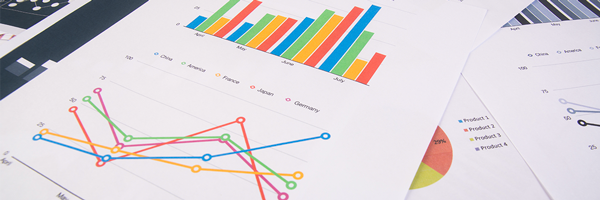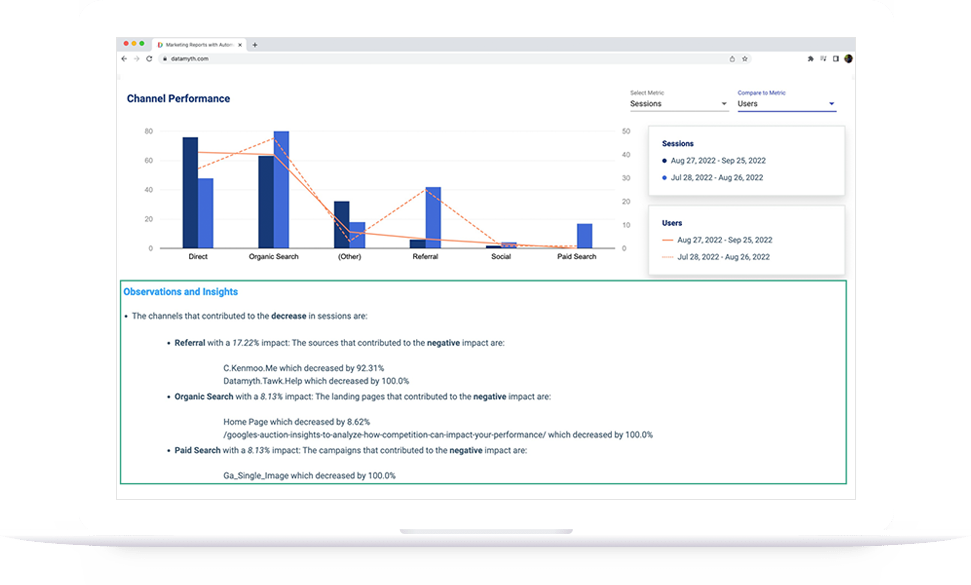In today’s digital age, businesses of all sizes are using digital marketing to reach their target audiences. But with so many different marketing channels to choose from, it can be difficult to track the effectiveness of your campaigns and make informed decisions about your budget.
That’s where a digital marketing reporting dashboard comes in. A dashboard is a visual representation of your marketing data that can help you track your progress, identify trends, and make better decisions about your campaigns.
In this article, we’ll discuss what a digital marketing reporting dashboard is, why it’s important, and how to create and use one effectively.
What is a Digital Marketing Reporting Dashboard?
A digital marketing reporting dashboard is a tool that collects, analyzes, and visualizes your marketing data. It can be used to track a variety of metrics, including website traffic, social media engagement, lead generation, and sales.
Dashboards are typically made up of charts, graphs, and other visual elements that make it easy to see your data at a glance. This can be helpful for identifying trends, spotting problems, and making informed decisions about your marketing campaigns.
There are several reasons why a digital marketing reporting dashboard is important for businesses:
- It can help you track your progress. A dashboard can help you see how your marketing campaigns are performing over time. This information can be used to identify what’s working well and what needs improvement.
- It can help you identify trends. By tracking your data over time, you can identify trends in your marketing performance. This information can be used to make better decisions about your campaigns and allocate your budget more effectively.
- It can help you spot problems. If you’re not tracking your data, it can be easy to miss inefficiencies with your marketing campaigns. A dashboard can help you identify problems early on so you can take corrective actions.
- It can help you make better decisions. By having all of your marketing data in one place, you can make better decisions about your campaigns. For example, you can use a dashboard to see which channels are driving the most traffic to your website or which campaigns are generating the most leads.
There are several steps involved in creating a digital marketing reporting dashboard:
- Identify your goals: What do you want to achieve with your dashboard? Do you want to track website traffic, social media engagement, lead generation, or sales? Once you know your goals, you can start to gather the data you need.
- Choose your tools: There are a number of different tools you can use to create a digital marketing reporting dashboard. Some popular options include Google Analytics, DataMyth, Klipfolio, and DashThis.
- Gather your data: Once you’ve chosen your tools, you need to gather the data you need. This data can come from a variety of sources, including your website, social media platforms, and CRM software.
- Create your dashboard: Once you have your data, you can start to create your dashboard. This process will involve choosing the right charts and graphs, as well as the right layout for your dashboard.
- Share your dashboard: Once your dashboard is complete, you can share it with others. This could include your marketing team, your clients, or even the public.
DataMyth Dashboard Templates
DataMyth offers a variety of digital marketing reporting dashboard templates that you can use to get started. These templates cover a range of channels, including:
- Google Analytics Dashboard: This template provides a comprehensive overview of your website traffic, including data on sessions, pages, and conversions.
- Organic Search Dashboard: This template provides a deeper understanding of how users interact with your website, how they find it, and how well it’s performing in search engine results. This dashboard uses a combination of data from Google Analytics and Google Search Console
- Google Ads Dashboard: This template provides insights into your campaign performance & understand what is working & what is not. Identify the cause of change in performance based on KPIs selected.
- Facebook Ads Dashboard: This template provides insights into your Facebook Ads campaigns, including performance by placement, demographics, and KPIs.
- LinkedIn Ads Dashboard: This template tracks the performance of your LinkedIn Ads campaigns, including data on impressions, clicks, and conversions.
These are just a few of the many digital marketing reporting dashboard templates that DataMyth offers. To learn more about these templates or to create your own dashboard, visit the DataMyth dashboard templates.
Conclusion
A digital marketing reporting dashboard is a valuable tool for businesses of all sizes. By tracking your data and identifying trends, you can make better decisions about your marketing campaigns and improve your results.
If you’re not already using a dashboard, I encourage you to give it a try. It’s a simple way to get more insights from your marketing data and improve your results.


